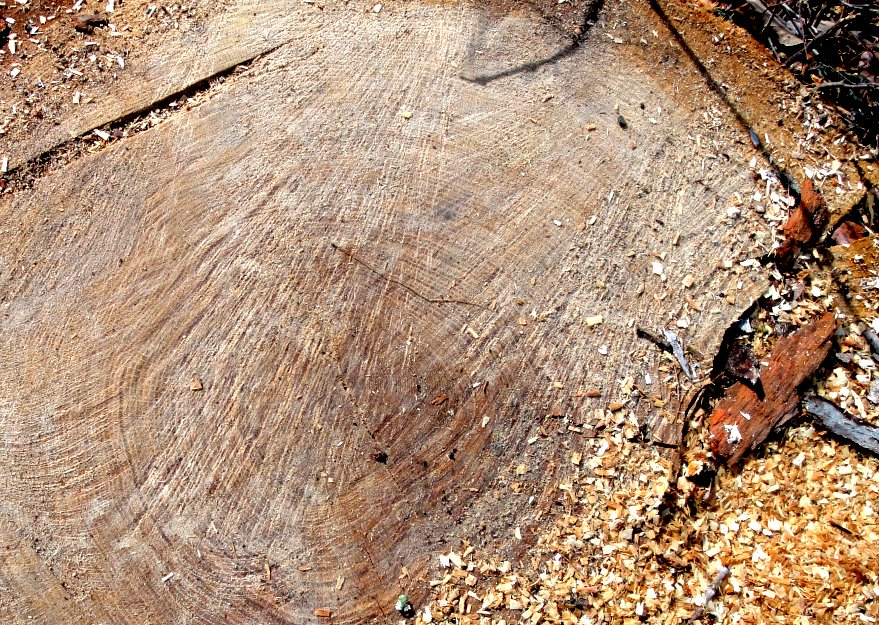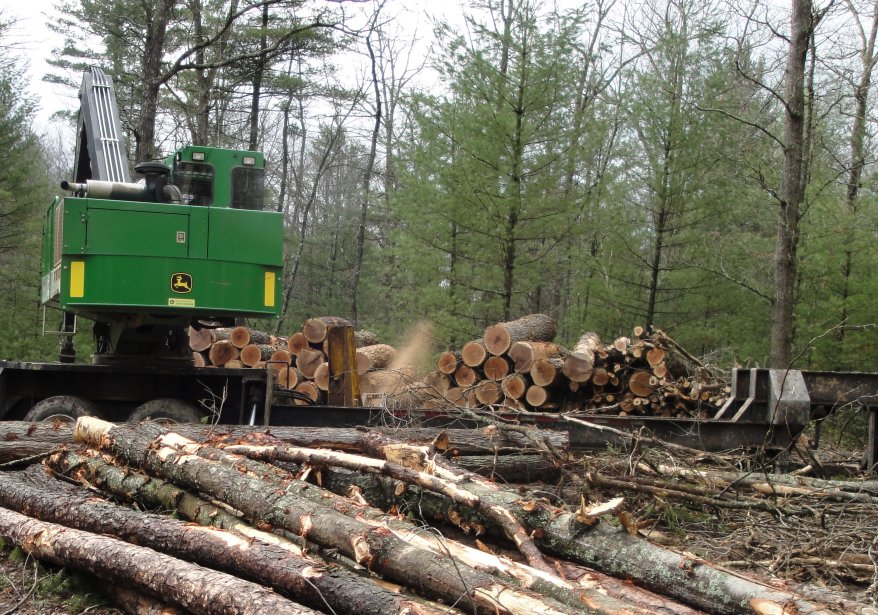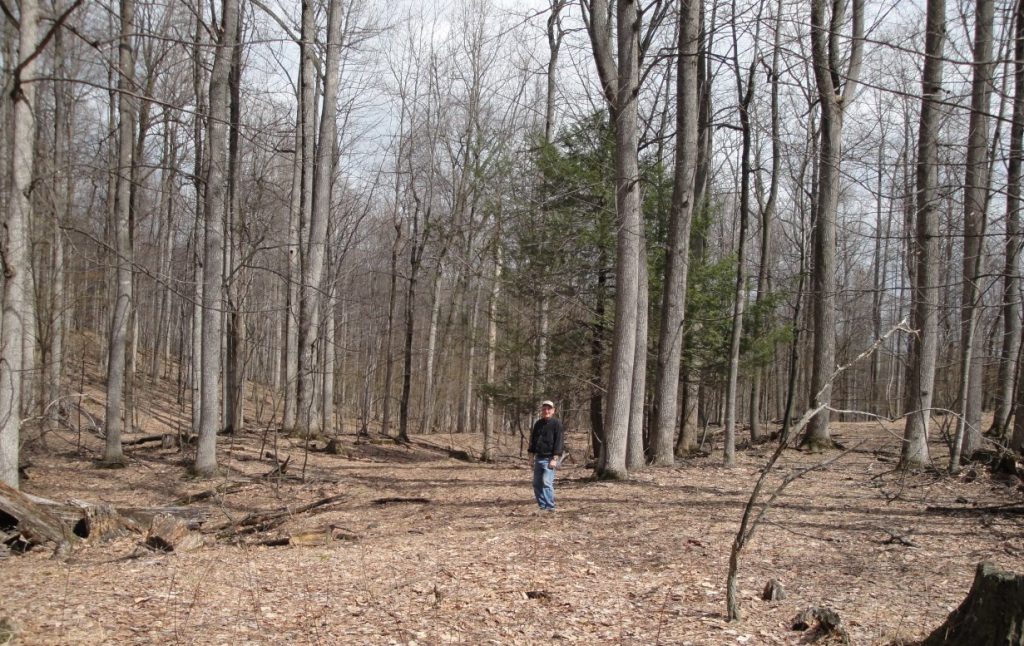
The stump is from a scarlet oak that started life sometime around 1870 up the hills just over the northern boundary of Rockingham County, where I was visiting this year’s tree farm of the year. I didn’t count all the rings, but it is close. I sharpened a little on the picture so you can see the pattern. It tells a little about Virginia history.
You can see that it grew hardly at all for the first sixty years. This is probably because it was severely overcrowded. This area was almost completely cut over in the decades before the Civil War. Some of the wood was used for building, mining supports & staves, but mostly for charcoal for little foundries and lime kilns in the region. The trees grew back after the industries moved along and they came back thick and for about sixty years, roughly from 1870-1930 there wasn’t enough sun or water to go around. (In those days there weren’t as many deer and other varmints around. These days, they would browse down some of the trees.) Our tree was also leaning a little. You can see that it grew as a reaction more on one side.
But something happened around 1930. Somebody probably cut down some of the trees. Or it could have been a fire or insect infestation, but that seems less likely, since whatever it was didn’t harm our tree here. In fact, it started to grow a lot faster, until it slowed again down because of its age.
Scarlet oaks are part of the red oak family, but they are among the worst members. They wood is not as good northern or southern red oaks and scarlet oaks tend to rot in the heart or have other irregularities. The logger said that the logs in the pile shown in the picture were probably not up to saw timber standards because of this.

All members of the red oaks family have open pores, which is why they cannot be used for barrels and generally do not do well when exposed to water. Even as seasoned firewood, they can hiss when burned, since they absorb water easily and a little rain will soak in. The oak whiskey barrels used for Bourbon whiskey are always white oak. White oak also makes better firewood.
There were mostly scarlet oaks on this ridge, mixed with white pines. White pines are partially shade tolerant when they are young, so they will come in under the oaks. The loggers cut out the scarlet oaks and the forest will come back as mostly pine. The scarlet oaks were almost done anyway. Many were already rotting in the centers and they were well past prime as timber trees.

This part of Virginia is white pine country, at least on the hillsides. In the coves, where the soil is deeper, the yellow-poplars do very well. The picture above shows some of them. They grow very fast. This stand has been harvested twice since the late 1970s and it is ready for a third cut, as you can see.
Yellow-poplar is good for furniture inside drawers and cabinets with veneer of oak or other high quality wood on the outside. Yellow-poplar doesn’t shrink or swell very much, so it is good for that purpose.
I will write more about this subject tomorrow.
